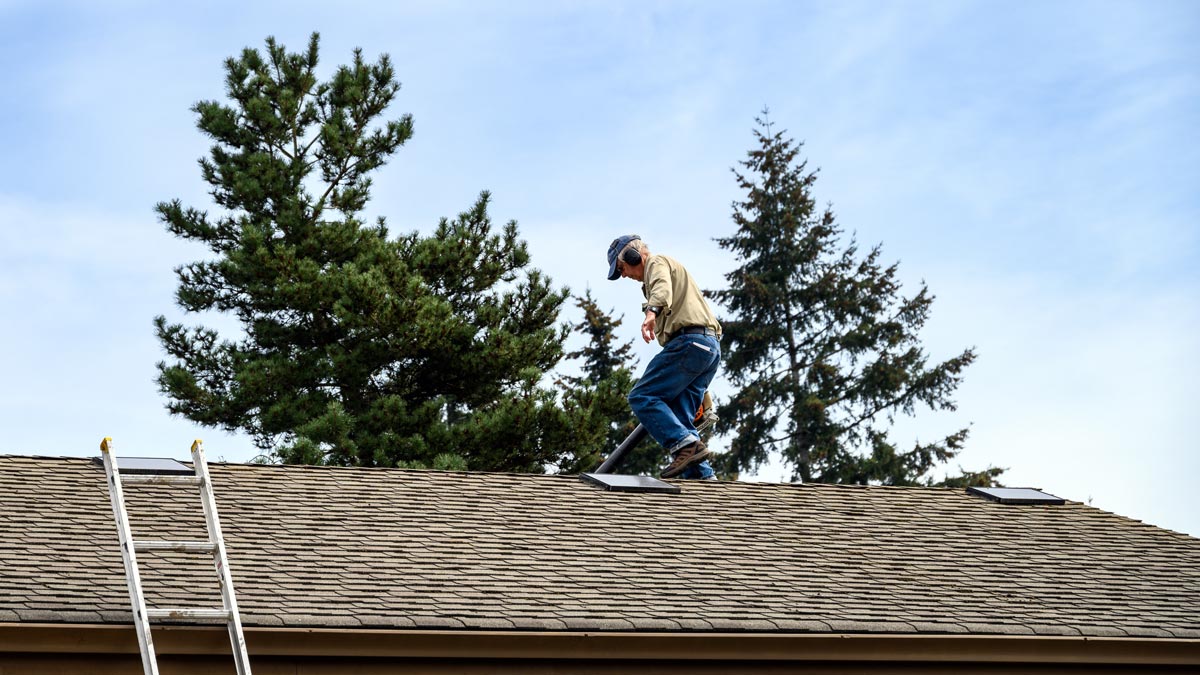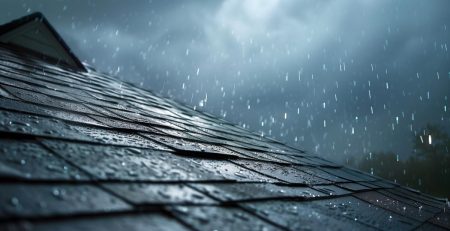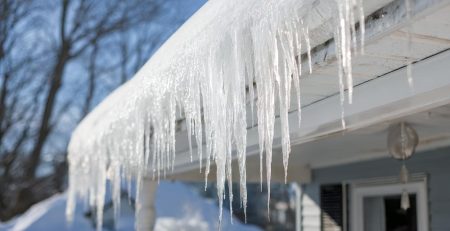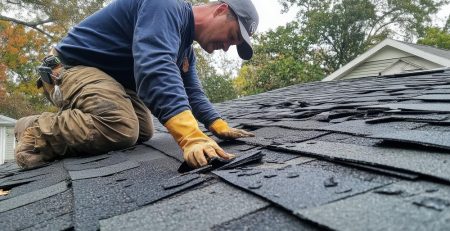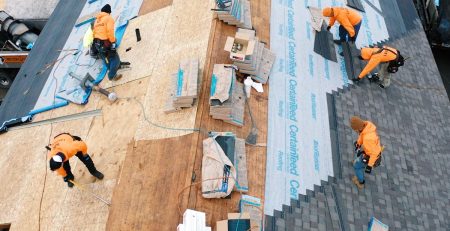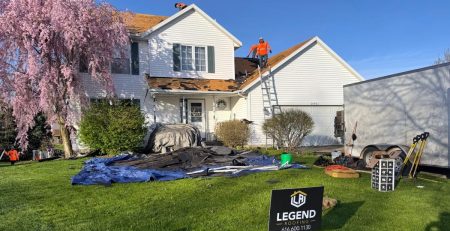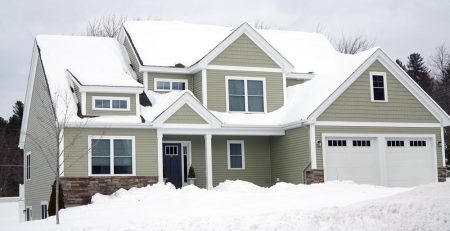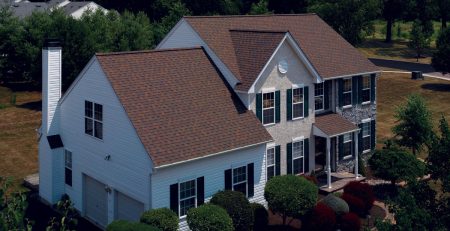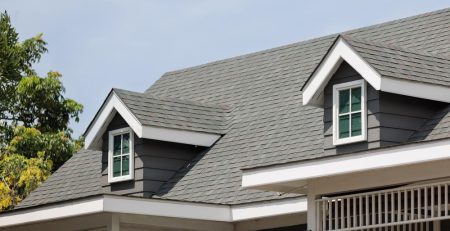Roofing Myths Debunked: What Homeowners Need to Know
When it comes to roofing, homeowners often encounter a lot of advice—some helpful, some misleading. With so many myths circulating, it can be difficult to separate fact from fiction. A strong, reliable roof is critical for protecting your West Michigan home, so understanding the truth is essential for making smart decisions about roof repairs, maintenance, and replacements.
In this blog, we’re setting the record straight by debunking some of the most common roofing myths. Let’s dive in!
Myth 1: Dark Shingles Make Your Home Much Hotter
The Truth:
While it’s true that dark colors absorb more heat than lighter ones, the impact on your home’s overall indoor temperature is relatively small—especially if your attic is properly ventilated and insulated. Modern roofing materials are designed to be energy efficient, and some dark-colored shingles even have reflective properties to help deflect solar heat.
In a place like West Michigan, darker shingles can even be beneficial in winter by helping to melt snow faster.
Takeaway:
Choose shingle color based on aesthetics and neighborhood trends rather than fear of heat retention. Focus on attic insulation and ventilation for energy efficiency.
Myth 2: You Can Easily DIY Roof Repairs
The Truth:
Minor repairs like replacing a single shingle might seem simple, but roofing is more complex than it appears. DIY repairs can lead to bigger issues if done improperly—such as leaks, poor sealing, and voided warranties.
Professionals not only ensure repairs are done correctly but also spot underlying issues that an untrained eye might miss. Plus, working on a roof is dangerous without the right safety equipment and experience.
Takeaway:
When it comes to your roof, it’s best to hire experienced roofing professionals to ensure the job is done safely and correctly.
Myth 3: New Roofs Don’t Need Maintenance
The Truth:
Even brand-new roofs require regular maintenance to stay in top condition. Neglecting routine inspections can allow minor issues—like small leaks, clogged gutters, or loose flashing—to turn into major, expensive problems.
In West Michigan, seasonal maintenance is especially important due to weather fluctuations. Spring and fall inspections can catch damage from heavy snow, rain, or storms before they cause real trouble.
Takeaway:
Schedule annual roof inspections and maintenance even if your roof is relatively new. It will maximize its lifespan and protect your investment.
Myth 4: Roof Replacement Means You Have to Tear Off the Old Roof
The Truth:
In some cases, building codes allow you to install a new layer of shingles over an existing one—called “reroofing.”
However, while reroofing can save time and money initially, it’s not always the best choice. It can hide deeper problems like rotted decking, lead to excessive weight on your structure, and may not last as long as a full replacement.
Local codes in West Michigan often restrict multiple layers of shingles, so it’s important to .
Takeaway:
Discuss options with a trusted roofer. While reroofing might be viable for some homes, a full tear-off and replacement is often the better long-term solution.
Myth 5: Roofing Warranties Cover Everything
The Truth:
Many homeowners assume that their roofing warranty will cover any and all problems—but most warranties have specific limitations. Manufacturer warranties often only cover defects in materials, not issues caused by improper installation, poor maintenance, or storm damage.
Additionally, warranties usually require homeowners to maintain their roofs regularly to keep coverage valid.
Takeaway:
Read your warranty carefully and make sure you understand what’s covered—and what’s not. Hiring a certified installer can also help ensure you’re fully protected.
Myth 6: Metal Roofs Are Only for Industrial or Farm Buildings
The Truth:
Metal roofing has evolved significantly and is now a stylish, durable option for residential homes. Modern metal roofs come in a variety of colors, styles, and textures that can mimic traditional shingles, slate, or tile.
Metal roofs are also highly durable, energy-efficient, and capable of withstanding West Michigan’s snow and winds.
Takeaway:
Don’t dismiss metal roofing if you’re seeking a long-lasting, environmentally friendly option with great curb appeal.
“A well-maintained, properly installed roof protects your home, enhances curb appeal, and brings peace of mind—especially here in West Michigan where the weather can be tough on building materials.”
Myth 7: If There’s No Visible Damage, the Roof Must Be Fine
The Truth:
Just because you don’t see missing shingles or obvious leaks doesn’t mean your roof is problem-free. Many issues, such as small leaks, moisture buildup, or damaged flashing, can remain hidden until they cause significant interior damage.
Moisture trapped under shingles can rot your roof deck over time, leading to expensive repairs or full replacements.
Takeaway:
Have your roof inspected regularly by a professional—especially after severe weather—even if everything looks okay from the ground.
Myth 8: All Roofing Materials Are Basically the Same
The Truth:
Not all roofing materials are created equal. Different shingle brands and styles vary widely in terms of durability, energy efficiency, weather resistance, and appearance.
Choosing the right material is crucial in a climate like West Michigan’s, where roofs must endure everything from heavy snow to strong UV rays.
Takeaway:
Consult with a roofing professional about the best materials for your specific home, location, and budget. Don’t just settle for the cheapest option.
Myth 9: Roof Repairs Are Covered Under All Homeowner’s Insurance Policies
The Truth:
Insurance often covers sudden and accidental damage—such as a tree falling during a storm—but it typically doesn’t cover general wear and tear or poor maintenance.
If your roof is old or neglected, don’t expect your insurance policy to foot the bill for repairs or replacements.
Takeaway:
Keep your roof well-maintained and document inspections and repairs. In case of storm damage, prompt documentation will make it easier to file a claim.
Myth 10: Roofs Are Meant to Last Forever
The Truth:
No roofing material lasts forever. Asphalt shingles—the most common roofing material in West Michigan—typically last 20-30 years with proper care. Other materials, like metal, slate, or tile, may last longer but still eventually require replacement.
Knowing the age and condition of your roof can help you budget and plan for replacement before major issues arise.
Takeaway:
Understand the realistic lifespan of your roof. Stay proactive with maintenance and plan ahead to avoid being caught off guard.
FAQ: Roofing Myths
Yes. Given our frequent storms and occasional hail, impact-resistant shingles can add extra protection and may qualify you for insurance discounts.
Look for consistent temperatures between your attic and the outdoors, no ice dams, and no visible mold. A roofing contractor can also perform an assessment.
Look for licensed, insured contractors with strong local references. Verify certifications from major roofing material manufacturers.
Roofing Company in West Michigan
Roofing is a critical part of homeownership, and understanding the truth behind common myths can save you thousands of dollars and countless headaches. A well-maintained, properly installed roof protects your home, enhances curb appeal, and brings peace of mind—especially here in West Michigan where the weather can be tough on building materials.
If you have roofing questions or need an expert inspection, don’t fall for the myths—contact Legend Roofing today at (616) 600-1130. We’re here to help you make informed, confident decisions about protecting your home!


